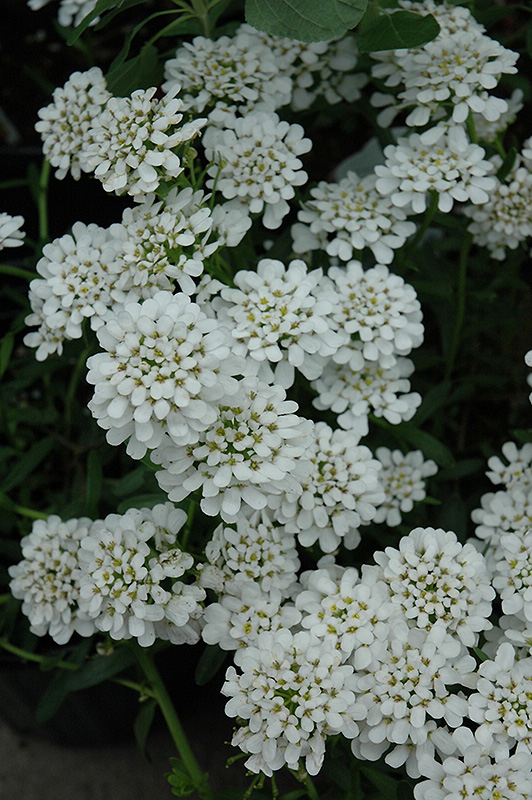Brunswick
422 Bath Road
Brunswick, ME 04011
1-800-339-8111
207-442-8111
Falmouth
89 Foreside Road
Falmouth, ME 04105
1-800-244-3860
207-781-3860
Cumberland
201 Gray Rd (Route 100)
Cumberland, ME 04021
1-800-348-8498
207-829-5619
Alexander's White Candytuft
Iberis sempervirens 'Alexander White'
Height: 10 inches
Spacing: 18 inches
Sunlight:
![]()
![]()
Hardiness Zone: 2b
Brand: Walters Gardens
Description:
Large white clusters of flowers bloom over narrow, evergreen foliage during the mid to late spring months; drought tolerant once established; low maintenance and easy to grow, perfect for borders, edging and beds; attracts pollinators
Ornamental Features
Alexander's White Candytuft is smothered in stunning white flowers at the ends of the stems from mid to late spring. Its narrow leaves remain green in color throughout the year.
Landscape Attributes
Alexander's White Candytuft is an herbaceous evergreen perennial with a ground-hugging habit of growth. It brings an extremely fine and delicate texture to the garden composition and should be used to full effect.
This is a relatively low maintenance plant, and should only be pruned after flowering to avoid removing any of the current season's flowers. It is a good choice for attracting bees and butterflies to your yard. Gardeners should be aware of the following characteristic(s) that may warrant special consideration;
- Spreading
Alexander's White Candytuft is recommended for the following landscape applications;
- Mass Planting
- Rock/Alpine Gardens
- Border Edging
- General Garden Use
- Groundcover
Planting & Growing
Alexander's White Candytuft will grow to be about 10 inches tall at maturity, with a spread of 24 inches. When grown in masses or used as a bedding plant, individual plants should be spaced approximately 18 inches apart. Its foliage tends to remain low and dense right to the ground. It grows at a medium rate, and under ideal conditions can be expected to live for approximately 10 years. As an evegreen perennial, this plant will typically keep its form and foliage year-round.
This plant does best in full sun to partial shade. It is very adaptable to both dry and moist growing conditions, but will not tolerate any standing water. This plant should not require much in the way of fertilizing once established, although it may appreciate a shot of general-purpose fertilizer from time to time early in the growing season. It is not particular as to soil type or pH. It is highly tolerant of urban pollution and will even thrive in inner city environments. This is a selected variety of a species not originally from North America.

